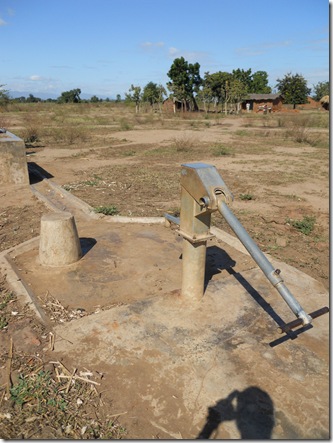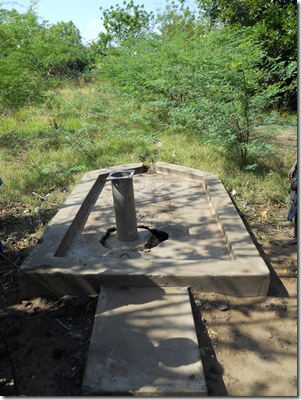The statistic that “over 30% of waterpoints in rural Malawi are broken down at any time” gets thrown around a lot. It’s no wonder – for organizations like mine, working on these issues, it makes a great sales pitch. I’ve even used it myself a couple times. However, while on some levels it may be true, at the minimum I think it’s slightly misleading. In this post I want to break that down a little by examining statistical evidence from a database of over 42,000 waterpoints in rural Malawi, circa 2005.
According to the database, the overall waterpoint functionality rate in 2005 in Malawi was 67.7%,. However, this number includes gravity fed standpipes – most organizations using this statistic deal exclusively with handpumps, plus Malawi contains a lot of derelict gravity fed water schemes which were abandoned by the government in the 1980s. The 10,857 gravity fed standpipes in the database have an average functionality rate of 50.5%, which obviously skews the overall functionality rate substantially south. So since we’re usually talking about handpumps, and since most of the standpipes in Malawi failed about 10-20 years ago, it seems unfair to keep them in the sample. Removing them gives an average handpump functionality rate in Malawi of 73.5%.
A seriously non-functional borehole in Chikhwawa District, Malawi (Photo Credit: Lauren Hockin)
Now there’s the issue of age – handpumps aren’t built to last forever. For argument’s sake, take an average design life of about 15 years as a reasonable length of time to expect a new handpump to operate without being replaced or seriously rehabilitated. If you then look at only handpumps constructed between 1990 and 2005, the functionality rate jumps up to 78.1%.
Then there’s a final issue: all of these functionality rates are taken as one-time snapshots, which comes with an inherent bias (call it "snapshot bias"), best illustrated with an imaginary example from London, UK.
Assume for a minute that the functionality rate for kitchen sinks in occupied houses in London is 100% – every house has a kitchen sink which yields water and which the occupant (of the house, not the sink) regularly maintains in order to keep it working. However, if you did a survey of kitchen sinks in London tomorrow, August 1st, at 12:56pm, you wouldn’t find 100% of the sinks working. A certain percentage of the sinks would have broken down that morning and would be sitting broken until the plumber got there later that afternoon. Thus even if every single house in London was making an ongoing and consistently successful effort to keep their kitchen sink working, at any given moment in time you still wouldn’t find 100% functionality.
 It looks functional…but it isn’t. (Photo Credit: Lauren Hockin)
It looks functional…but it isn’t. (Photo Credit: Lauren Hockin)
This snapshot bias is likely considerably more pronounced in rural Malawi than in urban London; in rural Malawi communities can often wait weeks, not hours, for a mechanic (plumber) to access spare parts and come to their village to fix their waterpoint. For this reason, many “non-functional” waterpoints actually belong in something like a "non-functional but soon to be repaired" category. How many belong in this category at a given time is difficult to determine statistically, but it’s likely a significant number.
Thus while the "functionality rate of waterpoints" may sit at 67.7% in Malawi, we can estimate that the "functionality rate of handpumps that were installed within the last 15 years" is more like 78.1%, while the "percentage of handpumps, installed within the last 15 years, which are either functional or have repair efforts actively being organized" is likely well into the 80%+ region. And we haven’t even talked about waterpoints that were so poorly built in the first place that they were either impossible to maintain or never really functional at all.
These considerations are sometimes threatening for organizations working on rural waterpoint operation and maintenance because they reduce the perceived severity of the problem, and thus reduce its marketing potential (which is already very low). However, I think taking them seriously is important – it helps us frame the “water infrastructure management” challenge in a more accurate and nuanced manner, bringing into consideration issues like construction quality, technology choice, design life, and speed of repair. In the end I think it’s worth it – if we market the wrong problems, it might not be long before we find ourselves addressing the wrong problems too.


